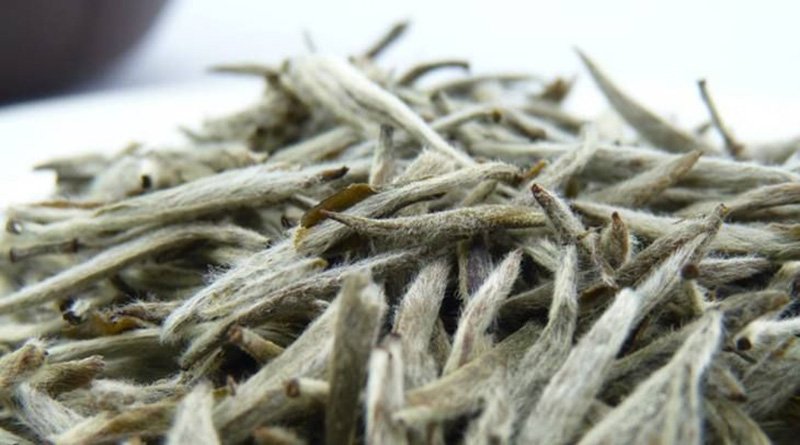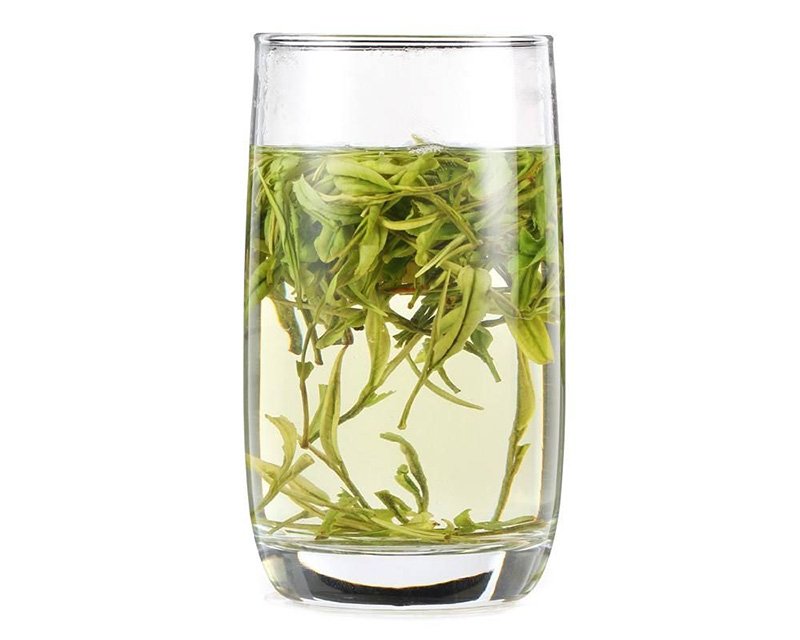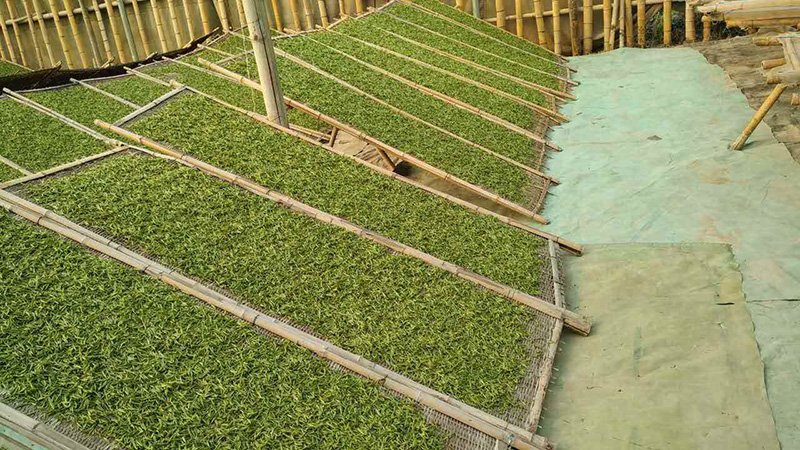Introduction
White tea is a tea that is closer to nature than green tea, with the least processed of all types of tea, only been slightly-fermented. So most of the natural nutrition facts content in leaves are retained
A distinctive feature of most white teas is that the leaves are covered with thin white fuzz, called “Hao”. Look at the tea far, just like covered by white snow, so gets the name “White Tea“.
High-quality white tea is rare because it is difficult to process. The classification of white tea is also mainly based on the season of tea picked, short harvest time makes white tea rarer.
Besides, white tea, just like the Pu-erh tea (a type of dark tea), is also suitable for aging.
Only white tea with less than 8.5% of water content is suitable for aging. White tea which aging for more than 5 years, known as “Old White Tea.”
The old one and the new one have great differences in aroma, taste and even benefits. Because the nutrients facts in the tea are transformed and the aroma has gone.
The longer the aging time, the unique nutrients of old white get more, and the price becomes more expensive. It makes the white tea get the collection value just as dark tea.
Of course, the thing we are going to talk about is just for the new white tea. Because of the old white tea is hard to get, and many illegal businessmen falsification on the aging time of white tea for sale. Anyway, the new white tea also tastes good and brings many benefits.

White Tea Nutrients Facts
Tea Polyphenols
Tea polyphenols are the general name of polyphenols in tea and are the main source of the nutritional value of tea drinks. During the fermentation process, tea polyphenols are transformed into other nutrients facts.
The higher the degree of tea fermentation, the darker the color, the more natural tea polyphenols will be transformed into other polyphenols, such as Catechins, Tea Pigments.
The amount of natural polyphenols in tea also depends on the part of the tea plant it picked. White tea is basically made from the tender leaves and buds of the tea plant, and the degree of fermentation in the processing of white tea is relatively low. So the white tea contents more natural polyphenols than other types of tea, second only to green tea.
Caffeine
White tea is true tea and contents caffeine. During the fermentation and baking processes, a large amount of caffeine has been volatile. So the high process degree of the tea, the less caffeine it contains. On the other side, the low process degree tea just like green tea and white tea, the caffeine contents also more than other types of tea.
Caffeine is naturally found in tea plants, and the more tender the part, the higher the caffeine content. Although the white tea been slightly fermented, it is made from the most tender buds of the tea plant. So most white teas have more caffeine than green teas.
Because caffeine stimulates nerves, taking too much can lead to insomnia and nervousness.

Amino Acids
In the process of white tea withering, with the increase of enzyme activity, protein hydrolysis in the leaves produces amino acids with umami and sweet taste, and the content of amino acids tends to increase.
In the middle and late stages of withering, the o-quinone in the tea will increase, amino acids are oxidized by o-quinone into volatile, which provides aroma sources for white tea.
With a less process degree, white tea also contents more amino acids than other types of tea.
Tea Polysaccharide
Tea polysaccharide is a kind of acidic glycoprotein, which is composed of carbohydrate, pectin, and protein in tea, and has lots of mineral elements. It is one of the important nutrients in white tea, which can be very helpful in managing diabetes. Besides, the content of tea polysaccharide in white tea is also the highest too.
Flavonoids
Flavonoids in white tea are a kind of tea polyphenols, mainly Catechins and Tea Pigments, which affect the color and benefits of white tea.
White tea during the storage, the changes in the structure of polyphenols, to some extent, promote the formation of flavonoids. Old white tea flavonoids are more than new white tea, and the longer time it aging, the higher the extent of the flavonoid content increased, the more benefits it brings.
Vitamin
Due to the low degree process, white tea contains rich vitamins. Such as carotene, vitamin C, vitamin B1, vitamin B2, vitamin B11, vitamin E, and vitamin K, complement what we need for alive, and lots helpful on the human body.
White Tea Benefits
Keep Your Mouth Healthy
White tea is rich in fluoride and tea polyphenols.
Fluoride can effectively protect teeth and prevent tooth decay. Tea polyphenol can inhibit the growth of plaque, and its outstanding anti-inflammatory ability can effectively reduce the risk of oral inflammation.
Many oral care products on the market, such as toothpaste and mouthwash, include white tea extract as part of their ingredients.
Prevent Hypertension
White tea is rich in nutrients facts such as flavonoids, caffeine, and vitamins.
Under their synergistic effect, the concentration of cholesterol in the blood will get lower, reduce the accumulation of lipids in the blood vessel wall, while vasodilation. Making the blood flow more smoothly, thus keeping the blood pressure at a normal level, is helpful for the treatment of hypertension or prevent it.
Manage Diabetes
Tea polysaccharides play an important role in manage diabetes.
Research showed that tea polyphenols can inhibit the activities of amylase and sucrase in the human body, thus inhibiting the rise of blood glucose concentration. Tea polysaccharide can enhance the secretion of insulin, help to repair the disorder of glucose metabolism, reduce the blood sugar content.
The content of tea polysaccharide in white tea is relatively high, which plays a good role in the prevention of diabetes and the adjuvant treatment of diabetes.
Anti-Cancer
Scientists have been studying the role of tea in anti-cancer. White tea is rich in polyphenols, which a strong antioxidant ability and can remove free radicals in the body, thus inhibiting abnormal cell proliferation and canceration.
Although it doesn’t prove that tea can cure cancer. But many studies showed that tea has a promising potential in the prevention of cancer and the adjuvant treatment of cancer.
Anti-Aging
Catechins in white tea are a kind of tea polyphenols and a natural antioxidant. Catechins have excellent antioxidant activity, can repair the skin damage which causes by external effect(such as ultraviolet radiation), also reduce the risk of skin inflammation. By increasing the activity of skin cells, to delay skin aging, and help to get rid of wrinkles.
Prevent Osteoporosis
As we get older, bone mass will get lost, leading to osteoporosis. Research has proved that catechins in white tea can effectively reduce bone loss, promote the increase of osteoblasts and inhibit the formation of osteoclasts.
Besides, the rich mineral elements in white tea can also supplement the bone mass we lost and effectively prevent osteoporosis.
Weight Loss
White tea also has the effect of weight loss. Research showed that the synergistic effect of catechins and caffeine content in white tea can burning fat effectively. And caffeine can also play a role in stimulating the stomach, promote gastric juice secretion, help digestion.
Besides, flavonoids in white tea can also speed up the metabolism of cholesterol, reduce the cholesterol content in the blood, and the accumulation of lipids in the body.
Overall, white tea is undoubtedly an excellent natural weight loss drink.
Origin
China is the leading producer of white tea. Other places, such as India and Sri Lanka, produce much less white tea (Darjeeling white tea and Ceylon white tea) than China.
China’s white tea production is concentrated in Fujian province. The most famous is the Fuding city, most of the high-quality white tea is origin there.
Located on the northeast coast of Fujian, Fuding city has a subtropical marine monsoon climate, abundant sunshine, and mild climate, which is very suitable for planting and production of white tea.
White tea, such as Silver Needle, White Peony, and Gongmei, are all origin in Fujian. Due to the producing area is relatively single and concentrated, and the output is also limited, makes white tea relatively rare and expensive.
White Tea Processing
White tea has the least processing in all types of tea, only been withering and drying, retaining most of the natural nutrients facts in the tea leaves. Although the degree of processing is low, in the white tea processing every step has to be meticulous, great test the ability of tea masters.
Tea Picking
Picking is an important step in classifies white tea. Different types of white tea are classified according to the time of picking and the part of the tea plant it picked.
Such as Silver Needle Tea, which is made from the tender buds of the tea plants. White Peony and Shou Mei, are made from the leaves from different part of tea plants.
Besides, early April is the best time to pick tea, and the quality of tea picked during this period is the best. The quality and price of white tea picked at other times are also relatively low.
If not take good care during tea picking, even minor damage to the leaves can speed up fermentation (for example, oolong tea processing is fermented by deliberately destroying the leaves). Therefore, during picking, the requirements of tea masters are very high, to avoid its premature fermentation, making it lose its value.
Withering
After picking, the tea leaves will be laid on the bamboo sieves to withering. Withering is to make the tea leaves dry under the natural environment, and a slightly-fermented will happened during this time.
The duration of withering usually lasts 2-3 days, and the withering way is slightly different according to different types of white tea. Directly drying through a high-temperature, it will affect the nutritional facts and taste of the tea. The strength of the tea leaves after withering also increases and is not easy to break.
Besides, white tea withering is mostly done outdoors, the influence of weather factors is extremely important. Experienced tea makers, depending on the weather conditions, as well as the degree of tea withering, will make appropriate treatment timely. To avoid excessive fermentation due to rain or the sun shining, even excessive drying.

Drying
After the withering, the tea leaves need further drying. White tea drying also needs to be carefully, mostly use the baking machine to continuous bake the tea at a low temperature. The baking time is relatively short, about dozens of minutes. The dried white tea has lower water content and convenient for storage.
No comments:
Post a Comment